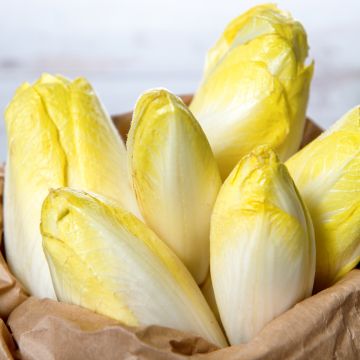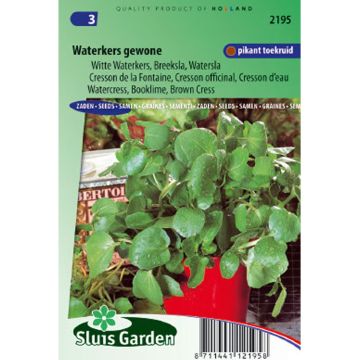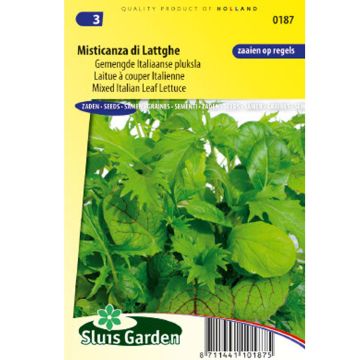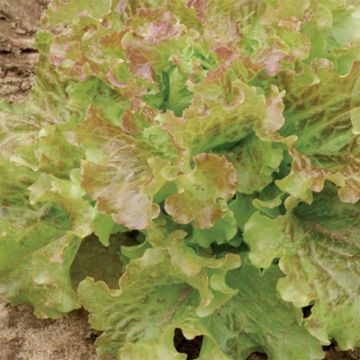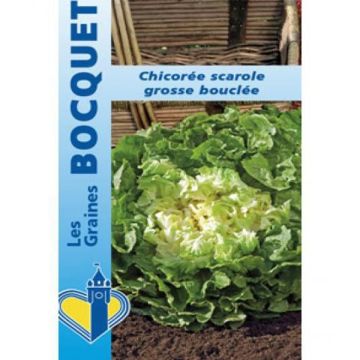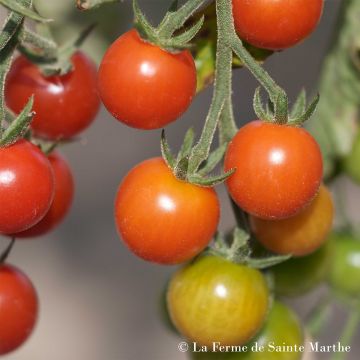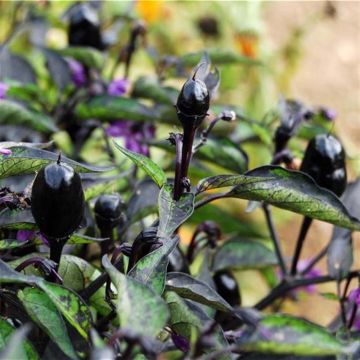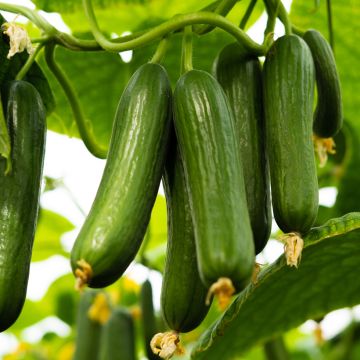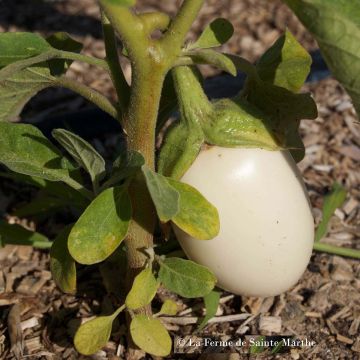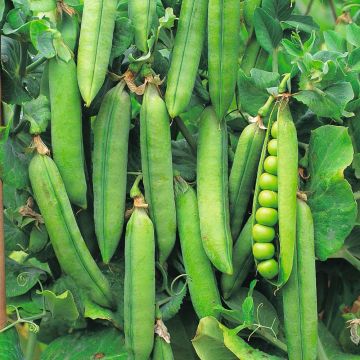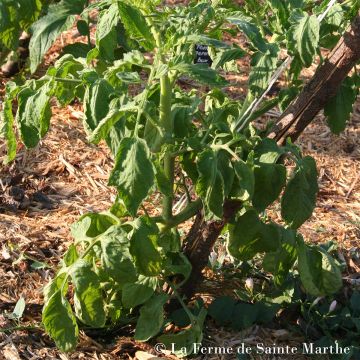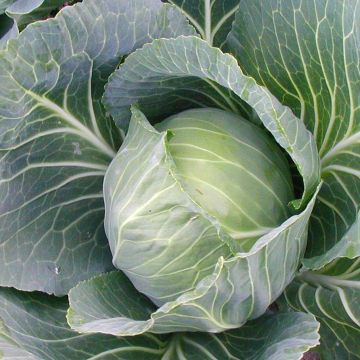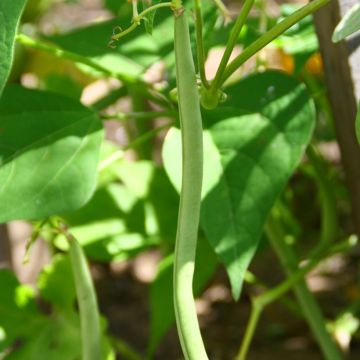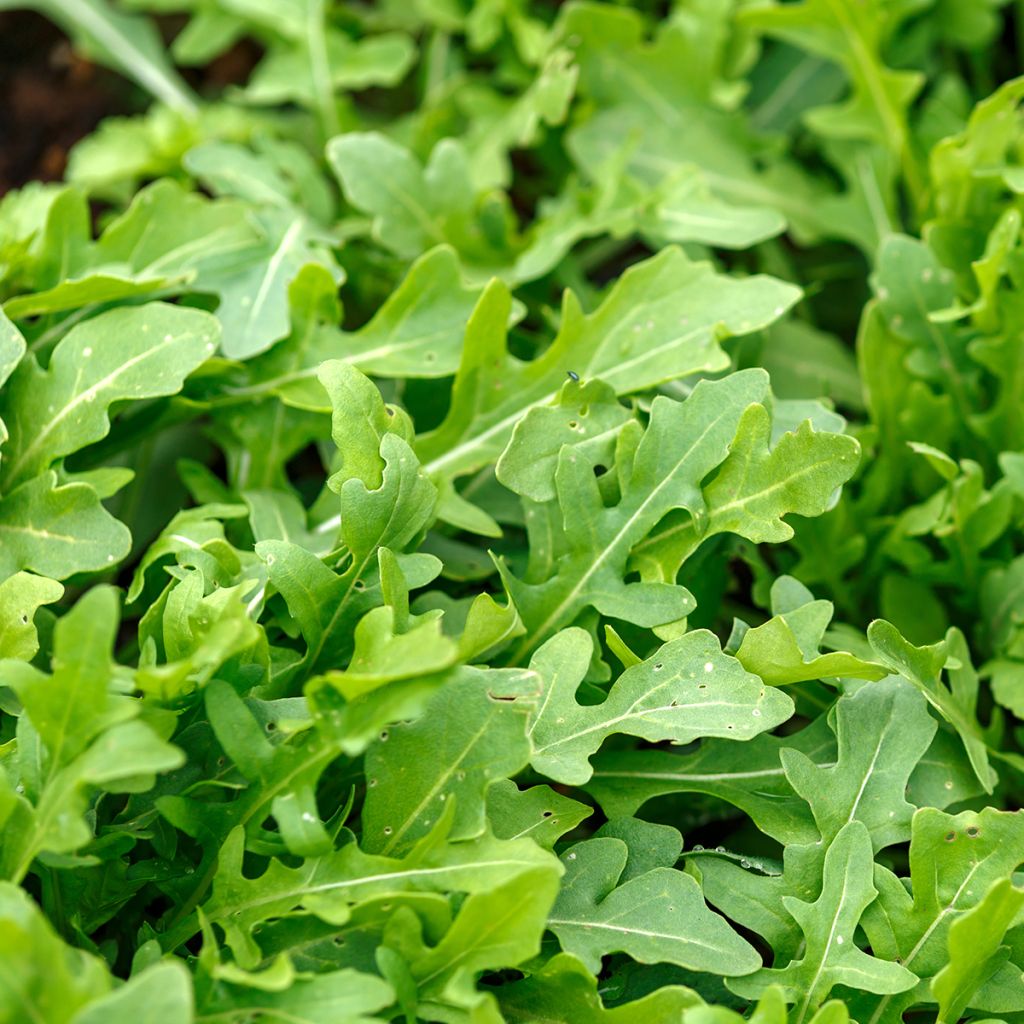

Diplotaxis tenuifolia Montana - wild rocket
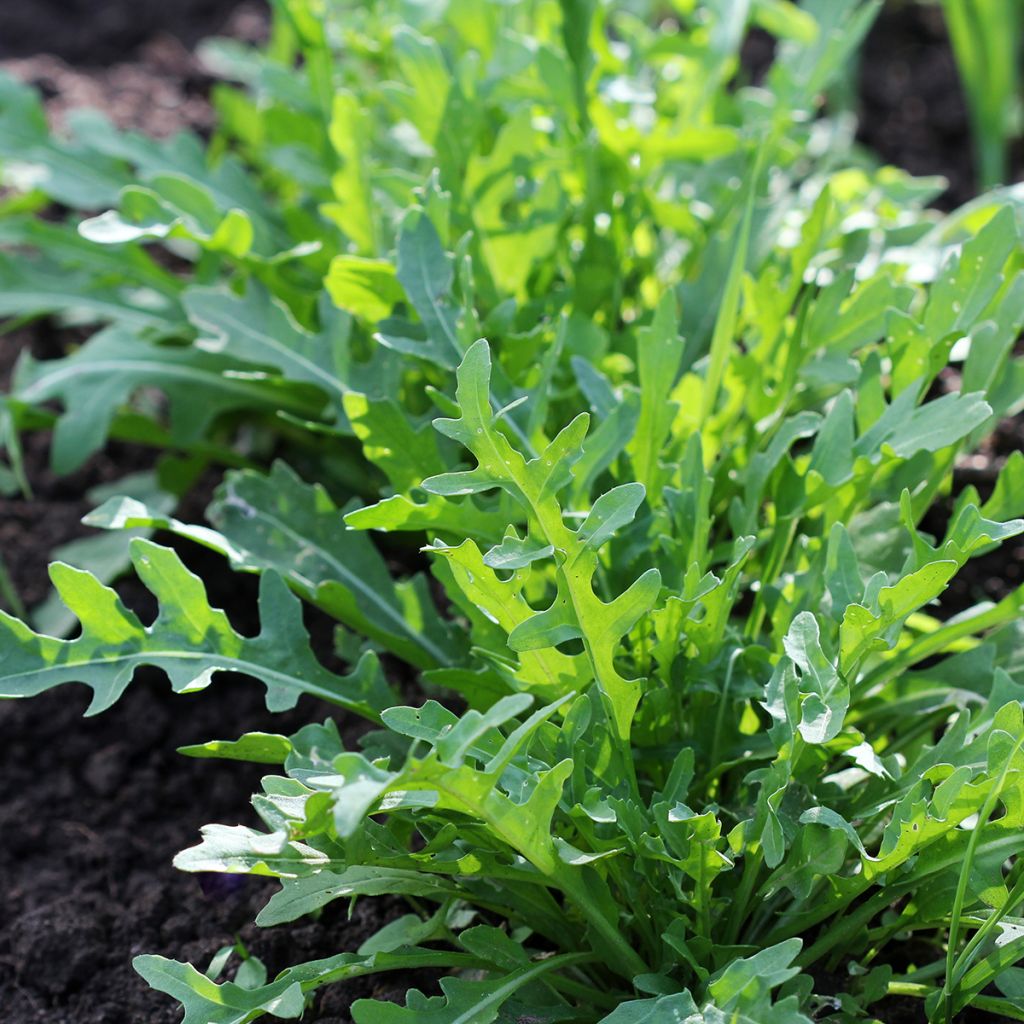

Diplotaxis tenuifolia Montana - wild rocket
Diplotaxis tenuifolia Montana - wild rocket
Diplotaxis tenuifolia Montana
Wild rocket
This item cannot be shipped to the selected country
Dispatch by letter from €3.90
More information
Schedule delivery date,
and select date in basket
This plant carries a 6 months recovery warranty
More information
We guarantee the quality of our plants for a full growing cycle, and will replace at our expense any plant that fails to recover under normal climatic and planting conditions.
Seed-only orders are dispatched by sealed envelope. The delivery charge for seed-only orders is €3.90.
Description
The Wild Rocket 'Montana' is a culinary plant with highly aromatic foliage that is loved for its taste and texture. Growing 10 to 20 cm tall, it has a slightly slower growth rate than cultivated rocket but has more pronounced, more intense flavours. It is spicy and pungent, with a hint of hazelnut, a salad that adds flavour to the foods it accompanies. It is robust and undemanding and can be sown directly outdoors in the ground, from March to September for a harvest approximately 2 months later.
Wild Rocket, in Latin, Diplotaxis tenuifolia, belongs to the Brassicaceae family, formerly known as Cruciferae. Known since antiquity, the Romans harvested it to flavour their salads. It was once forbidden in monastery gardens due to its aphrodisiac properties. It produces long, narrow, oblong, slightly thick, dark green leaves, with a spicy and peppery flavour. Pale yellow flowers veined with violet appear at the ends of the upright stems.
Wild Rocket Montana is not demanding, ideally cultivated in humus-bearing, moist, and well-draining soil, but it also tolerates ordinary soils well.
In the kitchen: Wild rocket is used like its cousin, domestic rocket, but its leaves are smaller and its aroma is stronger. Its unique taste varies depending on its cultivation method and the age of its leaves. When they are young, they have a nutty flavour, and when older, a hint of bitterness. In either case, rocket adds flavour to salads, raw vegetables, sandwiches, carpaccios... It easily integrates into "mesclun," a salad mix composed of lettuce, lamb's lettuce, chicory, oak leaf lettuce... It enhances pizzas, accompanies pasta dishes, or fills quiches, savoury tarts, lasagnas, and gratins. It is a valuable addition to soups, veloutés, or pesto. It pairs well with cuisines from around the world, such as Portugal, where it is served cooked with fish or meat, or in Turkey as an accompaniment to bulgur, or in Egypt in bean stews. With its flavours, rocket pairs well with goat cheese or gorgonzola, tomatoes, dry-cured ham, or walnut oil.
Health benefits of wild rocket: This refreshing and invigorating, leafy vegetable has digestive and antioxidant properties. It is rich in fibre, carotenes, vitamins A, C, and K, and provides calcium and iron.
Harvest: It is a good idea to sow at different times to obtain beautiful staggered harvests from May to November. Depending on the period and location, the first harvests occur 6 to 8 weeks after sowing. Simply cut the leaves at ground level, as needed.
Storage: Rocket leaves can be stored in the refrigerator for a few days. To fully enjoy its flavour, we recommend consuming it freshly picked.
Gardener's tip: Flea beetles are fond of rocket leaves and meticulously puncture them in dry and hot weather. While spraying tansy infusion can limit the damage, installing insect netting from sowing is the most effective method of control while avoiding the use of insecticides, which have consequences on the garden's balance, even if they are of natural origin.
Report an error about the product description
Harvest
Plant habit
Foliage
Botanical data
Diplotaxis
tenuifolia
Montana
Brassicaceae
Wild rocket
Cultivar or hybrid
Perennial
Other Salad leaf seeds
Planting and care
Culture: Wild Rocket Montana thrives in the sun in early summer or partial shade in midsummer, especially in very hot regions. Ideally, it prefers a humus-bearing, moist, well-drained and well-worked soil. If compost is needed, it should be applied in autumn, in the form of well-rotted compost, buried by raking to a depth of 5 cm, after loosening the soil as for any vegetable crop.
Sowing: The germination temperature of the Wild Montana Rocket is around 12°C and takes about 15 days. It can be sown under cover (cold greenhouse or frame) or outdoors, without protection.
Sowing period: from March to September in open ground.
Harvest period: from May to November.
In properly prepared and loosened soil, sow the seeds to a depth of 1 to 2 centimetres, in rows spaced 30 to 40 cm apart. Cover the sowing with a thin layer of soil and lightly firm it. You can thin out dense seedlings, leaving one plant every 10 cm or so. In spring and summer, it takes 40 to 60 days between sowing and the first harvest.
Container or planter cultivation is possible, in which case regular watering is necessary until harvest.
Maintenance: This plant tends to go to seed quite easily (except for certain varieties that are particularly resistant to this), so remember to water regularly with a fine spray and mulch the soil to maintain good moisture. It is also advisable to spread out the sowings to extend the harvest period.
Seedlings
Care
Intended location
This item has not been reviewed yet - be the first to leave a review about it.
Vegetable seeds
Haven't found what you were looking for?
Hardiness is the lowest winter temperature a plant can endure without suffering serious damage or even dying. However, hardiness is affected by location (a sheltered area, such as a patio), protection (winter cover) and soil type (hardiness is improved by well-drained soil).

Photo Sharing Terms & Conditions
In order to encourage gardeners to interact and share their experiences, Promesse de fleurs offers various media enabling content to be uploaded onto its Site - in particular via the ‘Photo sharing’ module.
The User agrees to refrain from:
- Posting any content that is illegal, prejudicial, insulting, racist, inciteful to hatred, revisionist, contrary to public decency, that infringes on privacy or on the privacy rights of third parties, in particular the publicity rights of persons and goods, intellectual property rights, or the right to privacy.
- Submitting content on behalf of a third party;
- Impersonate the identity of a third party and/or publish any personal information about a third party;
In general, the User undertakes to refrain from any unethical behaviour.
All Content (in particular text, comments, files, images, photos, videos, creative works, etc.), which may be subject to property or intellectual property rights, image or other private rights, shall remain the property of the User, subject to the limited rights granted by the terms of the licence granted by Promesse de fleurs as stated below. Users are at liberty to publish or not to publish such Content on the Site, notably via the ‘Photo Sharing’ facility, and accept that this Content shall be made public and freely accessible, notably on the Internet.
Users further acknowledge, undertake to have ,and guarantee that they hold all necessary rights and permissions to publish such material on the Site, in particular with regard to the legislation in force pertaining to any privacy, property, intellectual property, image, or contractual rights, or rights of any other nature. By publishing such Content on the Site, Users acknowledge accepting full liability as publishers of the Content within the meaning of the law, and grant Promesse de fleurs, free of charge, an inclusive, worldwide licence for the said Content for the entire duration of its publication, including all reproduction, representation, up/downloading, displaying, performing, transmission, and storage rights.
Users also grant permission for their name to be linked to the Content and accept that this link may not always be made available.
By engaging in posting material, Users consent to their Content becoming automatically accessible on the Internet, in particular on other sites and/or blogs and/or web pages of the Promesse de fleurs site, including in particular social pages and the Promesse de fleurs catalogue.
Users may secure the removal of entrusted content free of charge by issuing a simple request via our contact form.
The flowering period indicated on our website applies to countries and regions located in USDA zone 8 (France, the United Kingdom, Ireland, the Netherlands, etc.)
It will vary according to where you live:
- In zones 9 to 10 (Italy, Spain, Greece, etc.), flowering will occur about 2 to 4 weeks earlier.
- In zones 6 to 7 (Germany, Poland, Slovenia, and lower mountainous regions), flowering will be delayed by 2 to 3 weeks.
- In zone 5 (Central Europe, Scandinavia), blooming will be delayed by 3 to 5 weeks.
In temperate climates, pruning of spring-flowering shrubs (forsythia, spireas, etc.) should be done just after flowering.
Pruning of summer-flowering shrubs (Indian Lilac, Perovskia, etc.) can be done in winter or spring.
In cold regions as well as with frost-sensitive plants, avoid pruning too early when severe frosts may still occur.
The planting period indicated on our website applies to countries and regions located in USDA zone 8 (France, United Kingdom, Ireland, Netherlands).
It will vary according to where you live:
- In Mediterranean zones (Marseille, Madrid, Milan, etc.), autumn and winter are the best planting periods.
- In continental zones (Strasbourg, Munich, Vienna, etc.), delay planting by 2 to 3 weeks in spring and bring it forward by 2 to 4 weeks in autumn.
- In mountainous regions (the Alps, Pyrenees, Carpathians, etc.), it is best to plant in late spring (May-June) or late summer (August-September).
The harvesting period indicated on our website applies to countries and regions in USDA zone 8 (France, England, Ireland, the Netherlands).
In colder areas (Scandinavia, Poland, Austria...) fruit and vegetable harvests are likely to be delayed by 3-4 weeks.
In warmer areas (Italy, Spain, Greece, etc.), harvesting will probably take place earlier, depending on weather conditions.
The sowing periods indicated on our website apply to countries and regions within USDA Zone 8 (France, UK, Ireland, Netherlands).
In colder areas (Scandinavia, Poland, Austria...), delay any outdoor sowing by 3-4 weeks, or sow under glass.
In warmer climes (Italy, Spain, Greece, etc.), bring outdoor sowing forward by a few weeks.


































